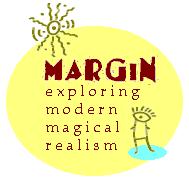
B O O K R E V I E W
THE FROGCHILD IN A KINGDOM BY THE SEA
r o b e r t a n t o n i ‘ s D I V I N A T R A C E

BY GUSTAVO PEREZ FIRMAT

B O O K R E V I E W
THE FROGCHILD IN A KINGDOM
BY THE SEA
r o b e r t a n t o n i ‘ s D I V I N A T R A C
E

BY GUSTAVO PEREZ FIRMAT
By Robert Antoni
DIVINA TRACE
© 1993
Overlook Press
$16.95 Paperback
ROBERT ANTONI's first novel is not an easy book to get into. First there's the story, which concerns the birth of a monstrous frogchild on a fictional island somewhere in the Caribbean. Then there's the novel's relentless retelling of this story from the perspective of seven different narrators, including a monkey, a statue and several members of the Domingo clan, whose patriarch, Barto, sired the "crapochild." And lastly there is the novel's overall narrator, Dr. Johnny Domingo, Barto's grandson, who on the eve of his 19th birthday locks himself up in the family library to make sense of the differing accounts. Fastidiously self-conscious, Dr. Domingo has the annoying habit of constantly reminding us just how marvelous and incredible the whole thing is.
If the Domingo saga sounds familiar, you've been reading modern Latin American fiction. But there's more: This is magical realism with an avant-garde twist, as if García Márquez and Joyce had themselves engaged in unholy cohabitation: "Hey day! Hey day! O barbary new world, such monkeys in it! O celebus cultured blackapes! O colubus age angolensis! Frumping you frowfrowing you {expletive} youspeciessuccessful, homonid-pongid divergence-quick, evolve you sacred homosapiens!"
Although this is the kind of writing that sends graduate students into fits of ecstasy (intertextuality! polyphony! heteroglossia!), it's difficult to say how many others will be willing to plow through the novel's "mudthick-mudswamp of monkeylanguage." On one level Divina Trace presents an agon of conflicting reports about the Domingo family; on another, the novel bears witness to its author's own efforts to domicile and reconcile literary idioms of quite distinct provenance.
The image that the novel offers up is that of the callaloo, the West Indian stew concocted from diverse ingredients. Since the Caribbean is itself a callaloo of races and cultures, the archipelago may indeed require a similarly heterogenous rendering. But the ingredients do need to be compatible, no matter what the craft. García Márquez's magical realism works because of the matter-of-factness with which the most extraordinary events are recorded. The understated plainness of his prose is just the right accompaniment for the surreal events in some of his works. But Divina Trace's strong Joycean seasoning overwhelms the blend, at times turning the sweet-tasting callaloo into a bewildering hodgepodge.
Like Joyce, Antoni does have an impressive ability to pick up and explore the expressive potential of different dialects, and one comes away from Divina Trace remembering its wonderful gallery of voices. When the author forgets the larger aspects of the plot and just lets his characters speak, the results are often dazzling. Here is Mother Maurina describing her first glimpse of her daughter, Magdalena Divina, the whore-saint who will give birth to the frogchild: "Ay Dios mio singon! Before I can even have a chance now to realize how happy I am for only an instant when all those lovely angels of heaven have already disappear theyself leaving behind them only the cloud of dust to choke us, and no sooner do I look in the face of this negrita cocoachild already sucking at my breast when some poison pass from out she mouth to penetrate my blood, and Sister Robin Clark and Sister Alicia have to hold on each to a leg quick and pull her way, because this child is so ugly I only want to pitch her out the window."
It is unfortunate that the characters too often get bogged down with both the story of the frogchild and the history of the Caribbean. One wishes that the narrator had really stuck to spinning "nothing more than a simple island folktale, telling of simple island folkpeople" as he says he is doing. Antoni would seem singularly gifted for such an undertaking. But the focus on mythmaking detracts from the sense of the island's quotidian routines, the small details that make up life in the Caribbean and everywhere else.
The fundamental problem may be that Divina Trace proceeds from the conviction (some would say, the literary cliché) that the Caribbean is an exceptional space, the theater for the unfolding of what Alejo Carpentier termed "marvelous American reality." But the Caribbean is not out of this world. The Caribbean is no more or less marvelous than a shopping mall in Anaheim. To believe otherwise may be as dangerous for fiction as it is for life.

margin home | contents | links | reading list | marginalia | contributors | staff | guidelines | kudos | subscriptions | contact us
Layout, design & revisions
© Tamara Kaye
Sellman, Webmaster
Active home URL:
http://www.magical-realism.com
(also:
https://www.angelfire.com/wa2/margin/index.
html)
TERMS OF USE: This site contains copyrighted materials, including but not limited to text and graphics. You may not use, copy, publish, upload, download, post to a bulletin board, include in any weblog or otherwise transmit, distribute or modify any elements of this site in any way, except that you may download one copy of such contents on any single computer for your own personal, non-commercial use, provided you do not alter or remove any copyright, author attribution or other proprietary notices.Rev'd 2004/05/22